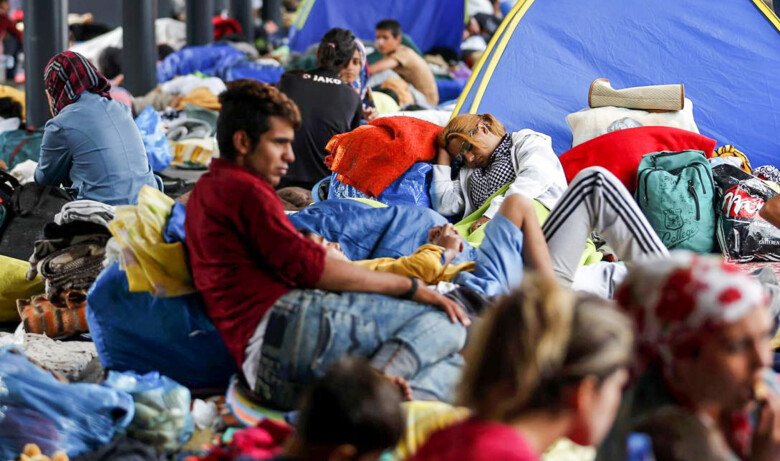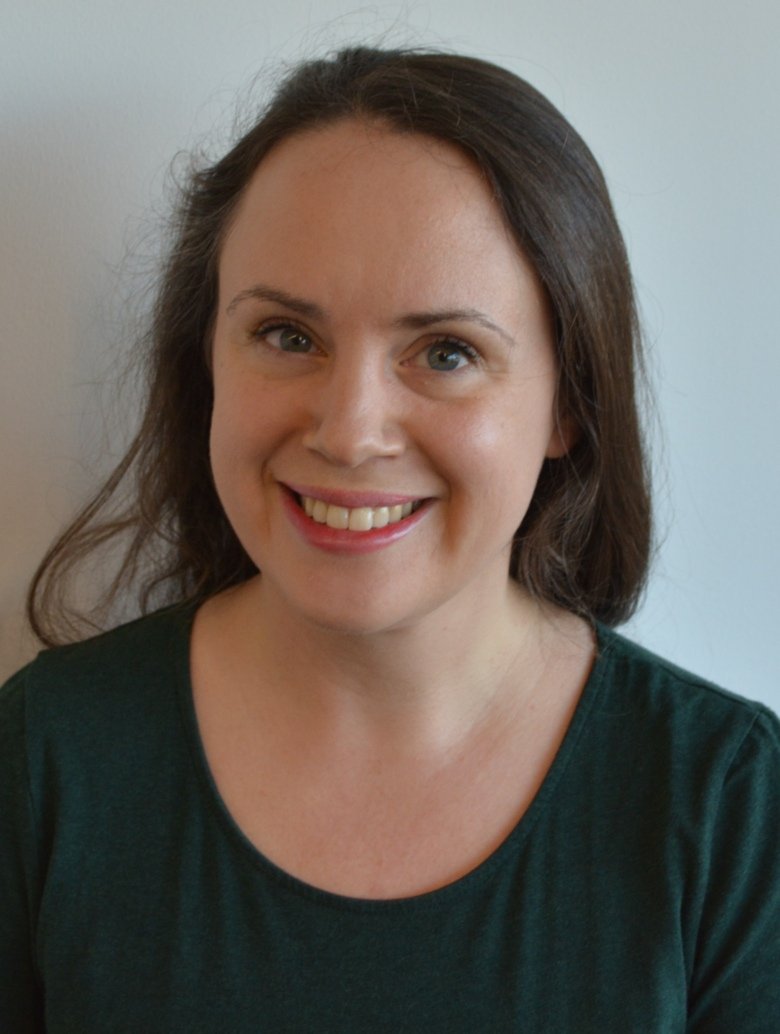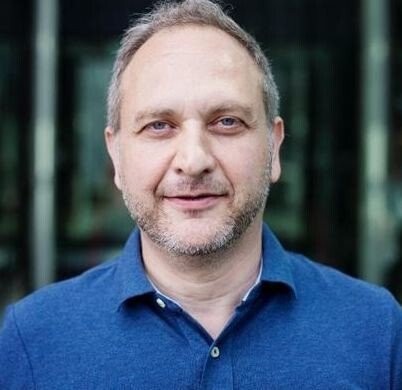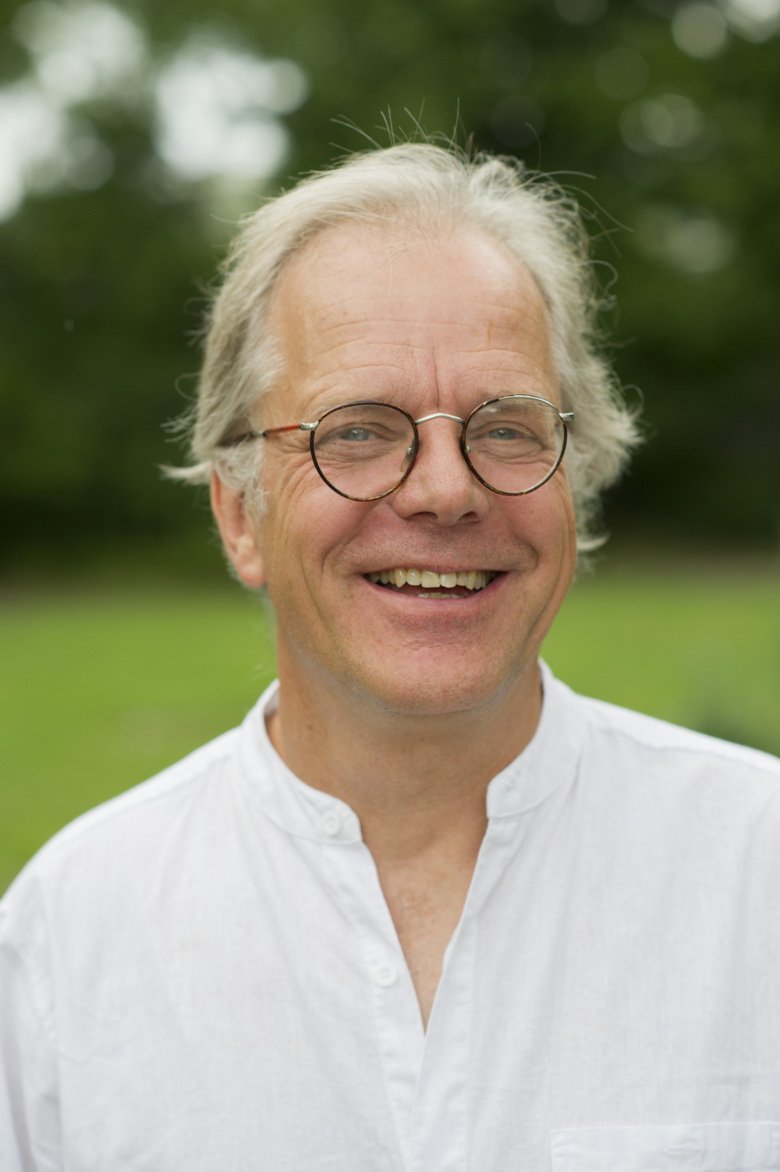Refugee policy risks counteracting mental recovery
Creating a life based on security, participation and belonging can give newly arrived people the environment they need to heal the mental wounds that many carry with them when they come to Sweden. But Sweden’s new refugee policy risks resulting in the opposite, researchers warn.

Text: Fredrik Hedlund, first published in Swedish in the magazine Medicinsk Vetenskap, no 1 / 2017.
In autumn 2015, more people came to Sweden than had ever done so before in such a short period in the modern era. In the three months from September to November, over 100,000 people sought asylum in Sweden. This is four times as many as came in the same period the previous year, and almost 20,000 more than those who came in the whole of 2014. In three months.
To put a roof over everyone's head, all Sweden's municipalities have been allocated quotas of refugees. Waiting times for asylum examination have skyrocketed – the processing time for an asylum case in Sweden is now one year – and politicians have put the brakes on. Rigorous border controls have strangled the influx of people from over 160,000 in 2015 to fewer than 30,000 in 2016. New laws that entered into force this summer have changed residence permits granted to those who have grounds for asylum from permanent to temporary and have limited the opportunity of certain refugees to be united with their family.
During the period it takes for an asylum case to be examined, asylum seekers have very limited rights as regards housing, compensation and healthcare, where only care that cannot wait may be given. This is thus a period that has now become considerably longer due to the great volume of asylum seekers.
But how are asylum seekers faring? What sorts of experiences and traumas do they carry with them? How is their health and how is it affected by the reception they are given?
Knowledge of refugee health is limited. This is partly due to it being a rather small area of research and partly because each new refugee catastrophe is unique, with refugees who have new special experiences. Some characteristics are common, while many are not. It is therefore not straightforward to use knowledge from, e.g. refugees from the Balkans in the 1990s now when many people are coming from the war in Syria. Current research on today's refugees can be described as shards of knowledge here and there, but hardly provides a clear overall picture.
Healthier side of the population spectrum
One way to shed light on the special situation of these refugees is to compare them with immigrants who have come from the same countries, but not as refugees. This will make it possible to discern whether the additional strains to which refugees are exposed also have effects on their health. Here, some basic starting points are that it has been shown that people migrating from one country to another are generally healthier and stronger than the population on average. Researchers call this the “healthy migrant effect”. It makes sense that those who make their way to a new country are generally from the healthier side of the population spectrum.
Several studies have shown first-generation immigrants to have fewer physical illnesses and a lower mortality than the average population, both in the country they leave and the country to which they come, at least in their first years in the new country. At the same time, it has also been known since the 1930s that the actual move to a new country entails a mental strain on those who move. Migration is even one of the five main risk factors for being affected by schizophrenia.

Anna-Clara Hollander, psychologist and researcher at the Department of Global Public Health, Karolinska Institutet has conducted several studies to compare the health outcomes of refugees with other immigrants from the same countries. A few years ago, she studied data from more than 86,000 refugees and other immigrants who had received a residence permit in Sweden between 1992 and 1998. Her study was able to demonstrate that male refugees had a significantly higher risk of dying from cardiovascular disease and from causes such as suicide and accidents compared with men from the same countries who had not come as refugees. This is something she suggests could be due to the fact that refugees are increasingly suffering from depression and post-traumatic stress, which in turn increases the risk of both cardiovascular disease and suicide.
Last year, she published a new study covering more than 1.3 million people resident in Sweden between 1998 and 2011. The study shows that refugees on average have a 66 per cent higher risk of being affected by schizophrenia and similar psychoses compared with non-refugees from the same countries. These, in turn, have a 75 per cent higher risk of being affected compared with native-born Swedes.
A relative increase in risk
As always when relative risks are involved, it is important to keep track of what the figures are saying. Among Swedes, the absolute lifetime risk of being affected by schizophrenia is between a half and one per cent. A relative increase in risk of 75 per cent for immigrants and then a further 66 per cent for refugees means a somewhat elevated lifetime risk that is probably in the range between one and three per cent. So although the relative risk of being diagnosed is clearly higher for refugees and immigrants, the risk is fundamentally very small. But for researchers, the differences are the interesting part.
“The study is important both in terms of the refugees' situation and for understanding which risks of psychosis there are in the entire population. It indicates that besides all the other risk factors for psychotic disorders, traumatic experiences appear to be an additional risk factor,” says Anna-Clara Hollander.
She cannot identify exactly what it is that increases the risk as her study is a register study, and the details of what the refugees have experienced are not available, but she believes that it should involve something that happens to these people before or during their escape.
“We usually speak of pre-migration, migration and post-migration factors. After all, immigrants coming from the same countries have the same post-migration factors as refugees, but not the same experiences before and during their move. Our results therefore indicate that it is something that happens to refugees that does not happen to other immigrants which is an additional risk factor. Something in the actual refugee experience,” she says.
Anna-Clara Hollander also checked whether the difference in risk between refugees and other immigrants from the same area varied depending on where they came from. But it did not, with one exception.
“Refugees have a higher risk than non-refugees in all groups except among those coming from sub-Saharan Africa. Among these, the risk of being affected by schizophrenia and similar disorders is as just as high for non-refugees as it is for refugees,” she says.
Why this is the case is unknown, but one hypothesis is that it might concern discrimination.
“We already know that discrimination is a risk factor for psychosis. This group could be thought to experience more discrimination than other groups since they differ in appearance from the majority of Swedes,” says Anna-Clara Hollander.
Asylum seekers from sub-Saharan Africa
Further pieces of the puzzle can be found in another study. Fredrik Saboonchi, Professor of Public Health Science at the Red Cross University College and researcher at the Department of Clinical Neuroscience at Karolinska Institutet, has conducted a questionnaire survey among just over 1,200 newly arrived refugees from Syria and just over 170 asylum seekers from Somalia, Eritrea and Syria. The study shows that almost nine out of ten asylum seekers from sub-Saharan Africa state that they have been subjected to torture, but since they are fairly few in number, we should be very careful with that particular figure,” believes Fredrik Saboonchi.

“It might be a very selected group. But if we look at reports from the conflicts in these areas, we can see how widespread torture also is there in these groups,” he says.
And there is no doubt that torture has a negative impact on mental health.
“Torture is very specifically related to mental ill-health. Having been subjected to torture is a very, very strong predictor of mental ill-health. So it stands out in this context,” he says.
The purpose of torture is to break down a person's inner resources, something which it unfortunately often also succeeds in doing.
“It becomes very difficult to deal with other challenges when you have been subjected to systematic attempts to break down your person,” says Fredrik Saboonchi.
In the group of refugees and asylum seekers from Syria, significantly fewer, 30 per cent, stated that they had been subjected to torture. But what Frederick Saboonchi is primarily able to demonstrate in his report is that as many as one third of all refugees and asylum seekers had significant problems with depression or anxiety, and about as many had symptoms consistent with post-traumatic stress disorder. However, a significant amount of this mental ill-health coincides, meaning that it is the same individuals who both state that they are depressed and suffer from post-traumatic stress disorder. In practice, this means that a large percentage of respondents state that they experience mental ill-health, consisting of one or more problems. This means that many, but far from all, of the refugees who come here have more or less severe mental problems that they need help with.
| Depression / Anxiety | Post-traumatic stress disorder (PTSD) | Poor state of well-being | |
|---|---|---|---|
| Asylum seekers Somalia/Eritrea | 53 | 46 | 58 |
| Asylum seekers Syria | 42,3 | 32 | 47,1 |
| Newcomers Syria | 36,1 | 30,1 | 38,3 |
Percentage with depression / anxiety, post-traumatic stress disorder (PTSD) or poor state of well-being. Source: Nyanlända och asylsökande i Sverige. Röda Korsets Högskolas rapportserie 2016:1
The persons included in Frederick Saboonchi’s report received a residence permit between 2011 and 2013, and thus came to Sweden as early as 2010. The war in Syria was then at a different stage, and those who came to Sweden in the major refugee wave in autumn 2015 might have experienced considerably worse things and had a more difficult journey here with a greater impact on their health.
| Proximity of war | Loss of family or close friend | Physical abuse | Torture | Sexual abuse | Living with extreme fear | |
|---|---|---|---|---|---|---|
| Asylum seekers Somalia/Eritrea | 87,5 | 88,3 | 86,7 | 87,1 | 28,1 | 90,6 |
| Asylum seekers Syria | 100 | 73,6 | 33,4 | 25,2 | 1,9 | 92,3 |
| Newcomers Syria | 86,9 | 64,3 | 30,6 | 30,6 | 6,9 | 89,2 |
The percentage (of people) who have experienced various traumatic events. Source: Nyanlända och asylsökande i Sverige. Röda Korsets Högskolas rapportserie 2016:1
In the same way as the adult refugees are not a uniform group that can be described in a single way, the children coming together with their parents or relatives or the unaccompanied children are also not particularly similar. It is not possible to lump them together as refugee children and think they have the same needs or problems. However, one thing that the vast majority of refugee children have in common is that it is important for them to attend pre-school or school and socialise with other children. This is by far one of the most important factors for normalising the new situation for these children.

“Pre-school is often the best cure for newly arrived young children,” says Anders Hjern.
Anders Hjern is a paediatrician and Professor of Social Epidemiology for children and young people at the Department of Medicine, Solna, Karolinska Institutet and has greatly involved himself in the situation of refugee children. But he points out that the Swedish school system has no clear strategy for how these children are to be received, which is also something the National Agency for Education has pointed out.
“Some of the children have a fairly good schooling behind them, such as those coming from Syria. They might think they’ve ended up in some sort of vacuum when they only get to study Swedish when they want to work hard and have high ambitions. At the same time, other children coming from Afghanistan or Somalia have perhaps not had any opportunity to go to school at all. For them, just being able to go to school is a new and fantastic thing,” he says.
Not the case everywhere
Experience and awareness of this in schools around the country varies very greatly.
“Schools in north Botkyrka, Tensta, Rinkeby or Rosengård in Malmö have experience and a way of thinking about this, but this is not the case everywhere. Some places go with a kind of ice bath, throwing children into a normal class straight away. They believe that this is the quickest way to learn the language. So there is no clear strategy,” he says.
He explains that there is a model called Skolfam, developed for foster children, which could be used and which is also used in some municipalities. The model includes a thorough review of the pupil's conditions and knowledge and drawing up a plan to strengthen the pupil's weak sides. But this is not only about knowledge gaps that need to be filled. Some of the children, just like the adults, have experienced terrible things in their home countries and on the journey here. And just as for the adults, this affects their mental health.
“Some have had difficult experiences and have post-traumatic stress symptoms that can disrupt their learning. They are not able to concentrate because there are a load of memories that are in the way. They have such an increased level of stress that they have difficulty sitting still. This is something that is special for this group which schools also have to handle,” says Anders Hjern.
For pupils with such problems, teaching in smaller groups often works better, but this requires resources that sometimes do not exist, something that Anders Hjern regrets.
“From a long-term perspective, it is a bad policy not to invest in these early resources,” he says.
Another question is which schools the children should go to. In a study from 2013, covering more than 75,000 year-nine pupils at more than 1,350 schools, Anders Hjern was able to demonstrate that schoolchildren with origins in Africa and Asia did consistently better in schools with a high proportion of immigrants and that they were often bullied in schools with a low proportion of immigrants.
One in three pupils originating in Africa or Asia who went to schools with a low proportion of immigrants stated that they had been bullied in the past week. The corresponding figure in schools with a high proportion of immigrants was approximately one in ten pupils, which is a fairly common figure for pupils in Swedish schools, as measured using this method. Anders Hjern therefore believes that it may be a mistake to place immigrant pupils in typical Swedish schools with a high proportion of Swedish-born pupils.
“You might think that this makes it easier to get Swedish friends, but it is not a given. On the other hand, it may happen that you get a better education if you attend a school with more Swedish children. I hope to be able to find out what it means for school success if you go to such a school compared with schools predominantly attended by other children of a foreign origin. As far as I know, no one has studied this in Sweden,” he says. Since school is such an important key to integration, it is very important that there are no mistakes. There is also a passion in many refugee children that it is important not to extinguish.
“A general experience from schools is that these are young people with a high study motivation, especially the unaccompanied ones who have an enormous drive and really want to learn,” says Anders Hjern.
Essential to handle the situation properly
Sweden has every opportunity to harness the potential there is in all the new people who have come here, but it is then essential to handle the situation properly.
“It is often a very strong group coming to Sweden, people who really want to achieve something and have a strong desire to live. It is a group that has many health factors and at the same time very many risk factors that also accumulate and perhaps reinforce each other,” says Anna-Clara Hollander.
A highly important question then is how we best take care of refugees and help them with their risk factors so as to prevent future problems of both a mental and physical nature.
“We cannot undo the horrific experiences that people arrive with. What we can do there is provide adequate care and treatment to address the consequences. But we can influence living conditions after they come to the host country. This is very much about creating environments and conditions that do not result in additional strains but that can be supportive,” says Fredrik Saboonchi.
He highlights how important it is to create a sense of security, participation and belonging for the refugees that can make their mental ailments fade with time.
From this perspective, he believes that the Government's legislative changes that only grant refugees temporary residence permits instead of permanent ones, and that reduce the possibility of uniting their families, counteract the opportunity for healing.
“When legislative changes lead to people experiencing greater uncertainty, less participation and greater isolation, it is obviously nothing that is favourable to mental health. The legislation depletes natural sources of recovery, such as being with family, which for many people can mean everything,” he says. There is a risk that this will lead to an increased risk of mental ill-health among refugees in the future,” he believes.
“The asylum seekers who have come in recent years, who are not included in our report, might carry with them different and perhaps more difficult experiences. At the same time, they are now facing a situation in which the wait during the asylum process is considerably longer and they are coming to a social and political climate that casts suspicion on them to a higher degree. This means that it is important that the healthcare services have sufficient resources. But the specialist centres that we work with already have long queues. You have to wait more than a year to get in,” he says. He emphasises that it is not the role of researchers to solve these problems, it is the task of politicians and other societal actors. But it is the responsibility of researchers to call attention to their findings.
“The important thing is increasing awareness about the great risk of significant mental ill-health among these people and that we perhaps should pay more attention to it and not just think that we can leave it to itself,” he says.
Prevent the mental problems
The major increase in asylum seekers needs to be matched by greater efforts in the healthcare system that will as far as possible prevent the mental problems they are now experiencing from developing into something more serious. To then have regulations that do not allow asylum seekers to receive anything beyond the most basic of healthcare while the asylum examination periods are increasing dramatically is hardly a good approach.
“No, limited access to healthcare is perhaps the last thing you want. If you think about the risks this entails and that you can help at an earlier stage with a smaller investment, maybe you should think a little more long-term,” says Fredrik Saboonchi.
But this is up to the politicians.
However, it is possible to do quite a bit of good on a small scale. Using simple means, the situation of asylum seekers and newly arrived people can be considerably improved.
“The general advice is to be active, be outside, try to find things to do and learn things. Sitting alone at a reception centre is not good for anyone; you need some type of behavioural activation so as not to break down,” says Anna-Clara Hollander.
“Here, there are many voluntary organisations that do really great work,” she says.
“I do not think you can overstate how important this is. It is precisely these things that get society to open up to you, riding around on a bike and getting an idea of what the city looks like, meeting other people and playing football. All these things make an enormous difference,” she says.
In schools, there are also simple things that can improve integration considerably,” says Anders Hjern.
“Sports, music and chess are three activities not requiring that much linguistic competence where refugee children have found a way in,” he says.
The important thing is to see the potential in the people who have come here, but to realise that many of them need help to get up and running, both professional help and also help of a simpler kind.
“Society has a chance to prevent mental ill-health. There are already many who work with this in voluntary organisations, but much more could be done to prevent mental ill-health in a group that has a lot of risk factors, but also many health factors,” says Anna-Clara Hollander.
Refugee, asylum seeker or newly arrived?
The official Swedish classification does not include the term refugee. Instead, its speaks of asylum seeker or newly arrived.
Refugee. According to the UN’s Refugee Convention, a person “owing to well-founded fear of being persecuted for reasons of race, religion, nationality, membership of a particular social group or political opinion, is outside the country of his nationality and is unable or, owing to such fear, is unwilling to avail himself of the protection of that country”.
Asylum seeker. A person who has travelled to Sweden and applied for asylum. Pending the processing of the asylum case, asylum seekers have very limited rights. An asylum seeker receives a maximum daily allowance of SEK 71 a day. As an asylum seeker, there is no entitlement to healthcare other than emergency care.
Newly arrived. An asylum seeker who has received a (now temporary) residence permit in Sweden. The person has also received a personal identity number and been registered in a municipality. A newly arrived person can, for two years, receive introduction benefit of SEK 308 per day (five days a week).
Sources: The UN, the Swedish Migration Agency, the UNHCR, the Swedish Social Insurance Agency.
